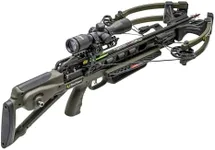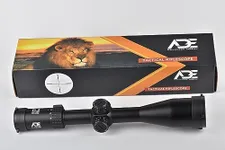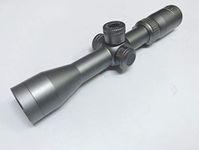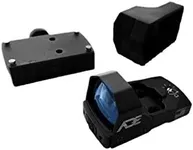Best Crossbow Scopes
From leading brands and best sellers available on the web.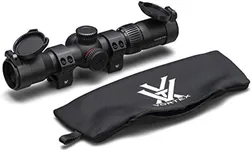
Vortex
Vortex Optics Crossfire II 2-7x32 Second Focal Plane Crossbow Scope Kit - XBR-2 Reticle,Black

Garmin
17%OFF
Garmin Xero X1i Crossbow Scope, Auto-ranging Crossbow Scope, 3.5X Magnification and Precise Illuminated Aim Points, 010-02212-00
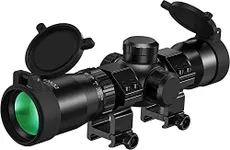
CVLIFE
CVLIFE 1.5-5x32 Crossbow Scope, 20-100 Yards Ballistic Reticle, 300-450 FPS Red Green Illuminated Optic Crossbow Scope for Hunting
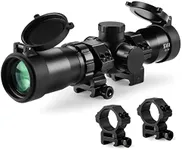
SVITVU
38%OFF
Professional Crossbow Scope, 300-450FPS(1.5-5x32), 20-100 Yards High Brightness and high Definition Red and Green Etched Glass Reticle, Free 20mm mounts
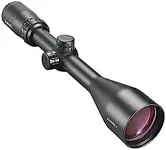
Bushnell
45%OFF
Bushnell Banner 2 Hunting Riflescopes DOA Quick Ballistic Reticle (Non-Illuminated, 3-9x50)
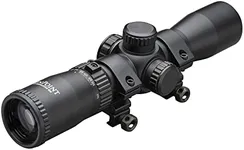
TenPoint
New TenPoint Rangemaster 100 Scope, Black - Improves Accuracy & Precision Out to 100 Yards - Accommodates Crossbows Shooting 380-505 FPS - Scope Rings & Flip Up Caps Included
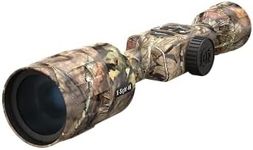
theOpticGuru
29%OFF
ATN MossyOak X-Sight-4k Pro Smart Day/Night Camouflage Scope w/Full HD Video rec, Smooth Zoom, Bluetooth and Wi-Fi (3-14x, Break-Up Country)

ATN
ATN X-Sight LTV 3-9x Ultra Light Day/Night Hunting Scope w/ QHD+Sensor, Video Record, 10hrs+ Battery Power

TRUGLO
TruGlo Compact Crossbow Scope w/ Rings, Camouflage
More products we considered
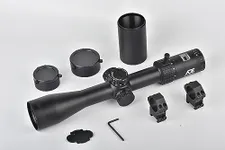
View Deal
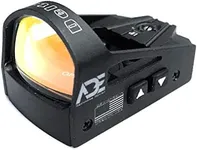
View Deal

View Deal
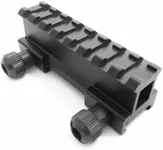
View Deal
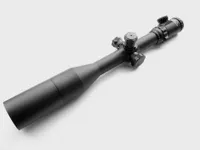
View Deal
Our technology thoroughly searches through the online shopping world, reviewing hundreds of sites. We then process and analyze this information, updating in real-time to bring you the latest top-rated products. This way, you always get the best and most current options available.

Most Popular Categories Right Now
 Yehudah Posnick
Yehudah PosnickA Guide to Selecting the Right Crossbow Scope
Whether you use it for hunting or just target practice, a crossbow is a safer alternative to using a firearm. They can give the thrill of archery, but don’t require the physical strength that’s required in pulling back the bowstring on a typical archer’s bow. But, if you want improved precision, you’ll see that there is a wealth of crossbow scopes that can be of assistance.
We’ll see that there are a lot of specifications that accompany crossbow scopes. Because a crossbow bolt won’t travel nearly as fast as a bullet fired from a gun, ballistics corrections become much more significant. For example, a crossbow will shoot a bolt from 275 to 450 feet per second (=fps), while a pistol can shoot from 671 fps to as much as 1450 fps! So, even shooting at a target 100 yards away will need correcting for gravity. We’ll see scopes that allow for that. And there are also other considerations, such as being waterproof, fog proof, and shockproof, to be able to withstand the conditions outdoors.
We’ll examine some of the options among crossbow scopes on the market nowadays. They’re easy to install and use, and they’ll improve your target shooting appreciably!
Types
As we saw above in the FAQ section, there are two main types of crossbow scopes:
-
Red dot scope: These use a red LED that is reflected by a mirror which is coated in a special way to only reflect red light. That way, you see the red dot in your field of view, but animals on the other end won’t see any red light. Also, the red dot that you see shows up well against a dark or green background. An example is the Barnett Premium Red Dot Sight for Crossbows (Model No. 17054). It has 11 dot intensity settings, which you can adjust to the type of background in view.
Barnett Premium Red Dot Sight for Crossbows
-
Multi-reticle (ballistic) scope: A crossbow bolt will drop slightly in height as it travels horizontally. A multi-reticle scope has horizontal markings to help you correct for ballistics: the physics of the vertical drop of the bolt as it travels horizontally. An example is the Ma3ty 4x32 Crossbow Scope. It also has a zero-lockable turret, and turrets to adjust for windage and elevation.
Ma3ty 4x32 Crossbow Scope
Field of view of the Ma3ty Crossbow Scope
What Reviewers Have to Say
We went over some customers’ impressions of the crossbow scope that they bought:
-
Adjust for the speed of your bow: Crossbows will differ in the speed at which they propel the bolt. Recurve bows will propel a bolt around 200 fps, while a compound bow will propel it as fast as 400 fps. The speed of your bow will figure into the ballistics of your scope. The Bear Archery X Speed Crossbow Scope can allow for crossbow speeds anywhere from 205 to 430 fps. Scopes have a speed ring, to let you adjust for the speed of the bow.
-
Flip caps: Many scopes will have caps that you flip onto the lenses, so as to protect them from dirt or scratches. Some, like the Vortex Optics Crossfire II, have a neoprene case as well, allowing you to store the scope separately.
Important Features
Here are some tips and features of different crossbow scopes, that can help you decide on a particular model:
-
Impact resistance: Many scopes will also mention their impact resistance, given in Gs, where 1 G is the acceleration due to gravity at the Earth’s surface, which is 9.8 m/s2. Some crossbow scopes can withstand accelerations of as much as 1000 Gs! This number, as well as their recoil resistance, will give you an indication of how rugged your scope is.
-
Appropriate for your type of crossbow: Some sights are good for only specific types of crossbows. Make sure that the scope that you buy is compatible with your type of crossbow. In short, there are five main types of crossbows:
-
Recurve bows, which utilize a single string and have a bow whose ends are bent away from the shooter.
-
Compound bows, which use pulleys and several strings. This configuration stores more potential energy when the bolt is pulled back, propelling the bolt forward at a greater velocity.
-
Automatic crossbows, which can be reloaded more quickly, since it has a magazine that contains several bolts.
-
Pistol crossbows, which are a compact version of the automatic repeating crossbow.
-
Reverse draw limbs crossbows, which can be mounted on an archer’s shoulder.
Also, there are crossbows with a Picatinny rail or Weaver rail. The TruGlo Red-Dot Crossbow Sight attaches to both Picatinny and Weaver rails–but you should check the compatibility with your crossbow before making a purchase.
-
Magnification: A scope will usually have a spec like the following for the Vortex Optics Crossfire, “2-7x32”. The first numbers indicate the magnification, giving a range of values. Thus, the Vortex scope magnifies from 2x to 7x. The second number is the diameter of the objective lens in millimeters. A larger objective lens will admit more light so that you’ll get a better view of your target.
-
MOA (Minutes of Angle): You’ll notice that the turrets on the scopes are designated by the number “MOA”. This stands for “Minutes of Angle”, and allows you to correct for the effects of gravity (up or down) and wind (left or right of the bullseye). Angles are measured in degrees, minutes, and seconds of arc. The scope’s MOA setting adjusts for minute differences of minutes of arc. For example, if you look through your scope, shoot a bolt at a target, and you see that it hit ¼” too low, you adjust for gravity with the elevation turret. If your sight has a ¼ MOA, it means that every click of the turret will change where your arrow hits by ¼”. As you can see in the below illustration, there are 32 “clicks” on the dial of a ¼ MOA scope.
Illustration of different scopes and their MOA values (from Accuscope USA)
Final Verdict
We looked at some features and specs of typical crossbow scopes. With illumination, windage and elevation turrets, and corrections for bow speed, a good crossbow scope can increase the accuracy of your crossbow considerably! Look over the Best Reviews Guide list, and select one out!
